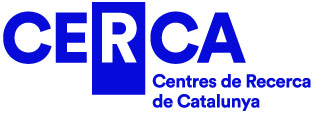Brief CV
Graduate in History from the Universitat Autònoma de Barcelona (2005). PhD from the UAB with the thesis Dynamics of settlements and territorial structure in the interior Laietània. Study of the Vallès Oriental from the Iberian period to the early Middle Ages, which obtained the qualification of Excellent Cum Laude and the European mention in the doctorate. Extraordinary Doctorate Prize 2011, awarded by the UAB.
Her field of research is Landscape Archaeology; she is an archaeomorphologist specialised in, habitat and occupation forms of habitat and territorial occupation, territorial structure (road network and land parcels) and prospecting. His research was focused on the use, integration and management of thematic databases in GIS environments. He also has extensive experience in high mountain prospecting and surveys (Catalonia, Andorra, France).
From 2011 to 2014, she was a postdoctoral researcher at the USR (3550) of the Maison des Sciences de l’Homme (MSH), Université Blaise Pascal (Clermont-Ferrand, France), and associate researcher at Geolab (UMR 6042) of the CNRS. She has developed studies on agropastoralism and mountain cultural landscapes in the north-east of the Cantal region (Massif Central, Auvergne), and analysis of LIDAR images applied to archaeology in the Puy de Dôme sector (Chaîne des Puys, Clermont-Ferrand, Auvergne).
Since 2015, she has specialised in knowledge transfer, in Scientific Culture and social impact of research. Since then, she has coordinated several science outreach projects just as heritage didactics and science education programmes and activities. She has experience in cultural management, socio-cultural and community dynamism, and the coordination of educational programmes in public facilities and institutions.
Her current worklines are focused on:
– Promotion of social innovation and territorial development based on the enhancement of cultural landscapes.
– The role of heritage as a tool to promote social inclusion and community well-being in socially vulnerable urban environments.
– The incorporation of universal accessibility criteria in the scientific culture, the heritage mediation and the cultural dissemination.






